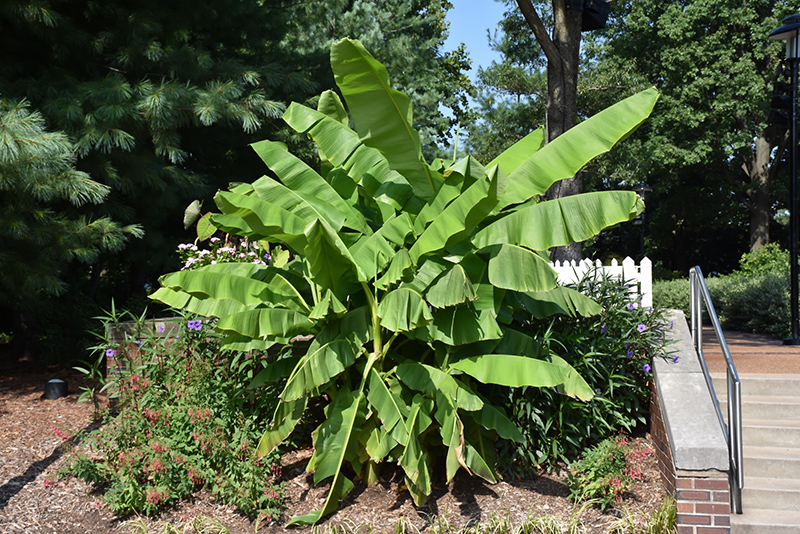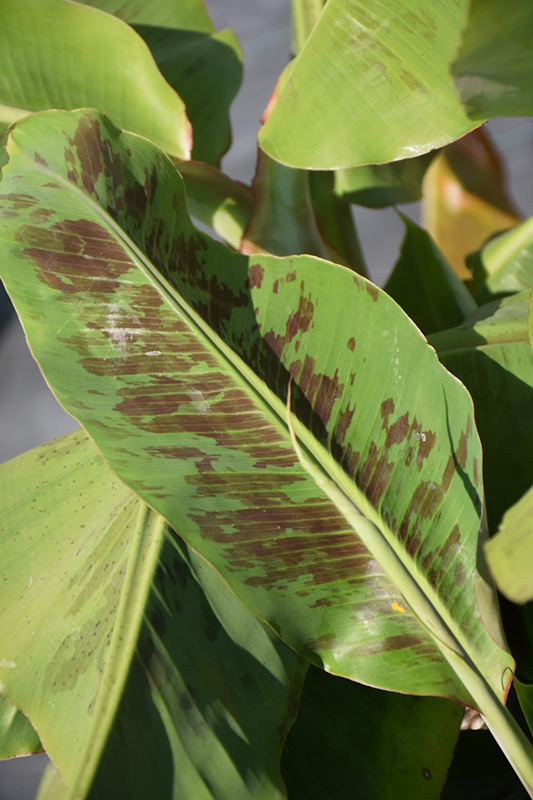Height: 10 feet
Spread: 6 feet
Sunlight:
![]()
![]()
Hardiness Zone: 5b
Description:
An exceptionally hardy variety that dies back in winter but will re-sprout from the roots in spring; cut back in mid-fall and mulch; very fast growing; evergreen in warm temperate climates; a nice landscape accent or container plant
Ornamental Features
Japanese Banana is a wonderfully ornamental plant with characteristically tropical foliage and uniquely interesting flowers. Its attractive enormous glossy oval leaves remain green in color throughout the season. This plant features showy buttery yellow flowers with creamy white overtones rising above the foliage in mid summer. The green fruits are held in clusters from early to mid fall.
Landscape Attributes
Japanese Banana is an herbaceous tropical perennial with an upright spreading habit of growth. Its wonderfully bold, coarse texture can be very effective in a balanced garden composition.
This plant will require occasional maintenance and upkeep, and should never be pruned except to remove any dieback, as it tends not to take pruning well. It has no significant negative characteristics.
Japanese Banana is recommended for the following landscape applications;
- Accent
- General Garden Use
- Container Planting
Planting & Growing
Japanese Banana will grow to be about 10 feet tall at maturity, with a spread of 6 feet. It has a low canopy with a typical clearance of 3 feet from the ground. It grows at a fast rate, and under ideal conditions can be expected to live for approximately 30 years. As an herbaceous perennial, this plant will usually die back to the crown each winter, and will regrow from the base each spring. Be careful not to disturb the crown in late winter when it may not be readily seen!
Bananas are curious plants in a botanical sense. Strictly speaking they are perennials, with individual shoots rising up from underground rhizomes and maturing in one to two years, then ultimately dying after producing fruit, to be replaced by new shoots from the base. However, given their ultimate size and coarseness they almost behave as small trees in the landscape. This plant does best in full sun to partial shade. It does best in average to evenly moist conditions, but will not tolerate standing water. It is not particular as to soil pH, but grows best in rich soils. It is somewhat tolerant of urban pollution. Consider applying a thick mulch around the root zone in winter to protect it in exposed locations or colder microclimates. This species is not originally from North America.
Japanese Banana is a fine choice for the garden, but it is also a good selection for planting in outdoor pots and containers. Its large size and upright habit of growth lend it for use as a solitary accent, or in a composition surrounded by smaller plants around the base and those that spill over the edges. It is even sizeable enough that it can be grown alone in a suitable container. Note that when growing plants in outdoor containers and baskets, they may require more frequent waterings than they would in the yard or garden.


